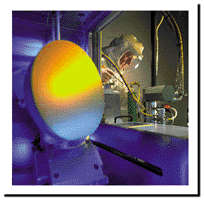Pharmaceutical quality water starts with drinking water that meets the requirements of the Environmental Protection Agency. After a progressive treatment process, the water may be packaged for special purposes like low chlorine or low ion content, or proceed through additional purification stages to meet USP specifications for Purified Water (PW) used as an ingredient in compendial doses, or even more stringent treatments required to produce Water-for-injection (WFI) used in the manufacture of parenteral solutions or other medical uses.
PW and WFI must meet the TOC and conductivity quality requirements specified in the United States Pharmacopoeia (USP), 23rd Edition. The specific methods, USP <643> TOC and USP <645> Conductivity, describe the instrument specifications, operating parameters, and testing methods necessary to manufacture and document the production of these highly purified water products. After a 5 year review and adoption process, these tests are now the official standards for pharmaceutical waters.


The semiconductor manufacturing industry has long found ultrapure water to be the most effective cleaning reagent, as well as the most environmentally friendly. The demand for ever-increasing computer power continually drives competition to produce smaller semiconductor device geometries with still larger circuit densities. While 10-30 ppb TOC was tolerable in semiconductor waters just 10 years ago, the newer 300mm wafers with <.18 micron line widths now require systems to operate in the 0.5-2 ppb range. Process water with even very small molecular weight organic contamination can cause wafer defects that reduce product yields - and profits. Considering that 1 ppb is equivalent to 1 second in 32 years, on-line TOC monitoring is critically needed throughout the entire water purification process to detect and report even the slightest and most fleeting TOC excursions. Data from feedwater, key process components, points-of-use, and effluent reclaim are all important to maintain overall system efficiency and economy, while optimizing the manufacturing process.

High-purity water is used in power generation industries as the source for steam to power turbine generators for electricity. While nuclear and fossil plants derive their heat from different sources, the system of boilers, pumps, turbines, and condensers are similar. The useful lives of these expensive components are significantly effected by the concentration of corrosive organic acids in the steam-condensate-feedwater system. Continuous on-line TOC monitoring of the source feedwater, as well as points within the condensate cycle, is necessary to minimize organic acids by selective pretreatment and precise addition of anti-corrosve chemical agents. Fast process response to TOC monitoring can reduce equipment replacement and increase revenue from less frequent maintenance downtime.
Microbial contamination of source waters can cause serious illnesses and must be controlled by chemical disinfection. Chlorination is the primary disinfection agent used for drinking water, but the reaction of chlorine with natural organic material (TOC) in the water can produce byproducts, some of which cause cancer or birth defects in laboratory animals. These concerns have led to recent changes as part of the Safe Drinking Water Act and have resulted in the establishment by the EPA of the Information Collection Rule (ICR), which obligates large public water systems to monitor and report TOC from multiple sample sites within their facilities. The new standards will require improved treatment practices to reduce TOC levels in the source water and reduce by 25% the formation of these potentially dangerous chemical byproducts.
TOC monitoring of the effluent stream can conserve water resources while providing valuable data for optimal control of the water process. It can direct the most economical treatment of waste effluent to meet regulatory requirements and reduce unnecessary wastewater flows to the environment.
Phone: (02) 2659-5006 (6 lines) Fax: (02) 2659-5012
Address: 6FL, NO.50, Lane 258 , JuiKuang Rd. NeiHu, Taipei, Taiwan
E-mail: info@anatel.com.tw
http://www.anatel.com.tw